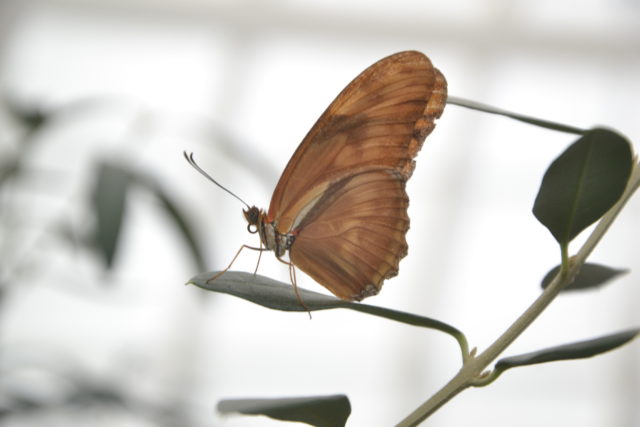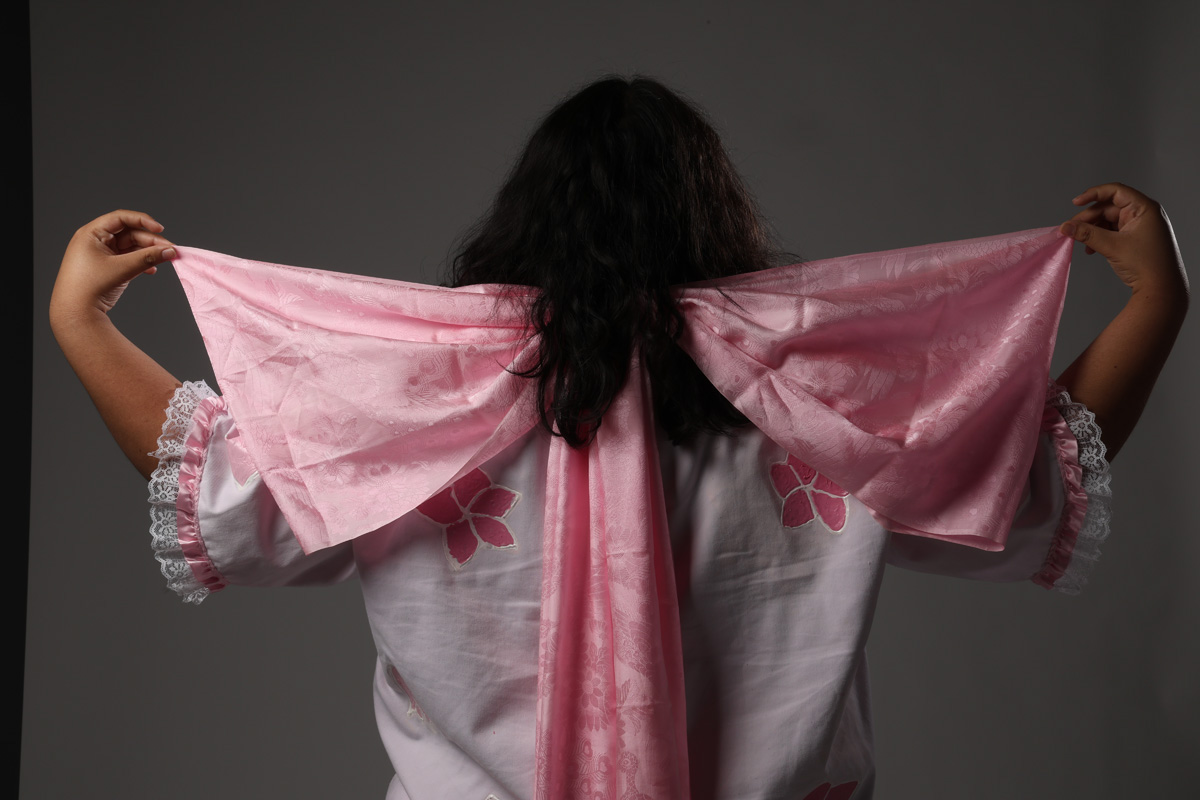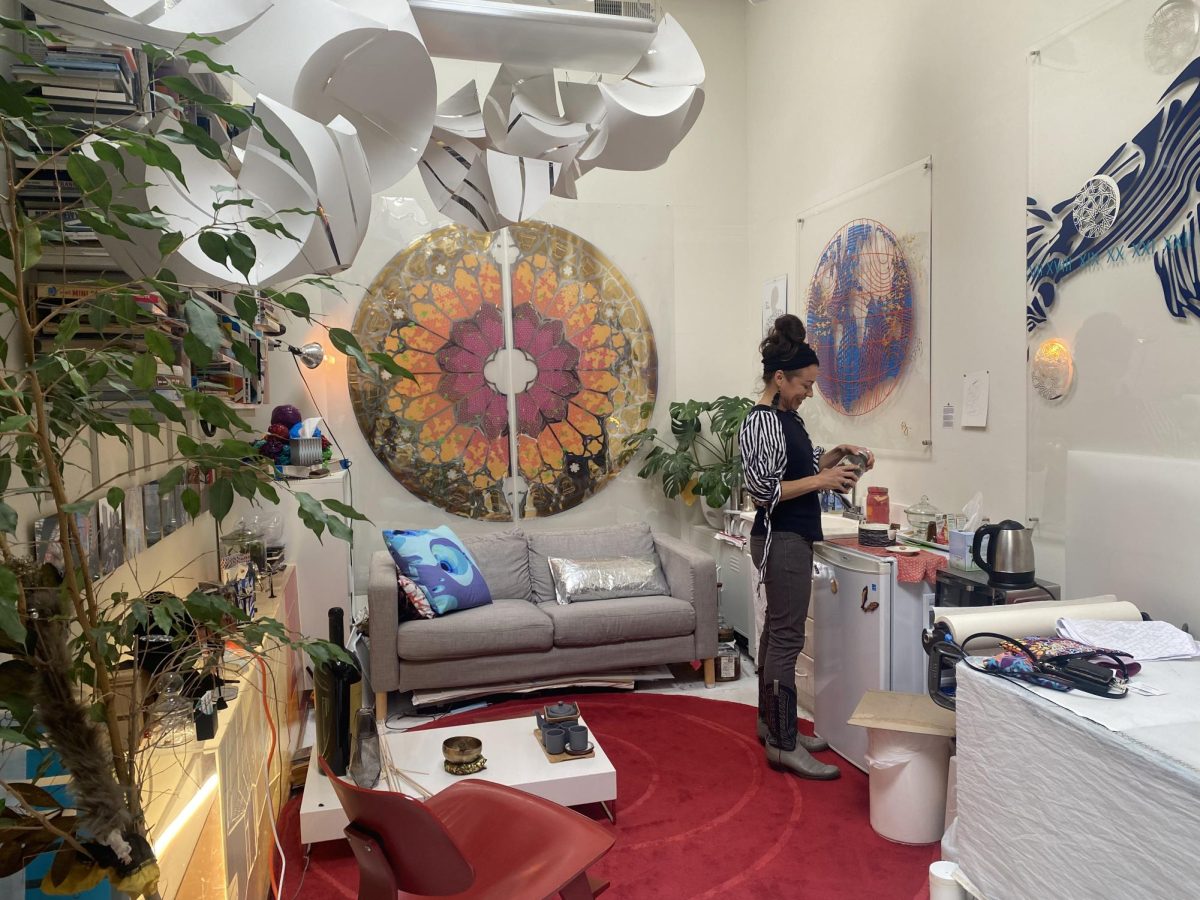Miniscule rain drops started collecting on the windows of the Conservatory of Flowers, but anyone inside the building would mistake it for the condensation found inside the building. The Conservatory’s staff is preparing the giant greenhouse for another day filled with curious visitors. While they move through the building to see if anything needs last minute attention, Drew Risner-Davis sits in the left wing, watching a monarch butterfly emerge from its chrysalis, a shell made of hardened protein that protects caterpillars as they transform into butterflies.
Drew, the exhibit manager and butterfly specialist at the Conservatory of Flowers, continues to makes sure everything in the Butterflies and Blooms exhibit runs smoothly, including the unfolding of a single butterfly. While a visit to the Conservatory does not break the bank, any exhibit visitor ill-informed about the price of admission might expect a higher ticket price.
“I’ve been completely immersed in butterflies, and moths a little bit, since last November,” shared Drew, who has worked at the Conservatory for four years.
With a warm smile and overflowing eagerness, the butterfly specialist begins his days at the Conservatory an hour before the greenhouse opens to the public. He first checks the Butterfly Bungalow, a large shadow box filled with rows of chrysalis pinned to the box and newly formed butterflies waiting for their chance to experience the exhibit. It allows him to make sure butterflies are emerging properly while looking for the ones that are ready to join the butterfly community in the next room.
Using cautious hands, the butterfly specialist moves the ready butterflies to the adjoining room where the mesmerizing insects hang from trees, plants, and the ceiling like vibrant Christmas ornaments.
Once he is done with the Butterfly Bungalow, he focuses his attention on feeding the butterflies. Discs carrying sponges filled with nectar — a mix of sugar and water — are placed around the exhibit. Although there are flowers in the room used to feed the butterflies, the extension of the exhibit to close in January, as compared to previous years when the exhibit ends in June, decreases the likeliness that the flowers will produce enough nectar on their own.
For the rest of the day Drew keeps a watchful eye on the habitat while trying to answer visitor’s questions.
“I get to be here interacting with visitors and really explaining the beauty of butterflies and why they’re so important to the ecosystem as pollinators,” describes the exhibit manager as his eyes light up at the idea of sharing his butterfly knowledge with others.
[foogallery id=”14750″]
The 138-year-old Conservatory of Flowers was home to twenty-two species of butterflies and a few species of moths — such as the luna moth — earlier this year, but now currently houses only twelve species of butterflies. With the butterfly’s average adult life cycle around 30 days, the exhibit can carry from 300 to 1,200 any given week.
Although the greenhouse is the final home for all the butterflies, they do not start their lives in San Francisco. The Conservatory of Flowers receive chrysalis, which are low maintenance and require no sustenance, from farms in Florida and Alabama that breed several species of butterflies. Most of the butterfly species originate from Latin American countries, with the Malachite, a butterfly with gorgeous bluish-green wings, coming from as far as South America.
Unlike the remarkable winged insects housed at the Conservatory, the exhibits flowers are grown in the Conservatory’s own nursery.
“Our nursery specialists designed the exhibit to compliment the space,” explained Maryam Nabi, the marketing and communications manager for the Conservatory of Flowers.
Vivid colors portrayed by the different flowers act as beacons for butterflies. The bright colors tell them there is a probably a flower full of nectar waiting to be fed on. Visitors wearing vibrant clothing are likely to gain a hitchhiker or two while exploring the exhibit.
Butterflies and flowers do not have the left wing to themselves. Koi fish found in a pond in the exhibit add to the stimulating environment, especially one large koi fish that expects food from every visitor that hovers over its watery enclosure.
Thanks to the help of new and returning visitors, the Butterflies and Blooms exhibit was able to return several times since 2006. Due to popular demand, the exhibit’s run was extended to January 7, 2018.
“The community really loved the exhibit,” Nabi exclaimed.
“We really wanted to make sure everyone has an opportunity to see the butterflies.”
Other than the Butterflies and Blooms exhibit, the Conservatory of Flowers is a warm paradise that offers an amazing array of plant life for visitors’ visual consumption. But if you ask Drew, he would explain that the real stars of the building are the winsome butterflies found in the left wing.
“My favorite part is definitely getting to share with people the amazing diversity of our butterflies. And I think that it’s really important in all parts of our lives to really recognize how important diversity is, to our diverse plant collection to our diverse butterfly collection,” Drew remarked.
With San Francisco’s rainy season around the corner, the salient structure found in the northeast corner of Golden Gate Park can be a cheap getaway for anyone. The price of admission for the entire Conservatory is $9 for adults, $6 for youth, seniors, college students, and San Francisco residents, and only $3 for children between the ages of 5 and 11. If a San Francisco resident is also a college student, their entry is only $4, but they must show a piece of mail with their name and San Francisco address on it, and their student ID to receive the discount.
Anyone traveling near or from SF State can hop on the 28 Muni line and exit the bus at 19th Avenue and Lincoln Avenue. They can take a short fifteen-minute walk through the right side of Golden Gate park and find the Conservatory of Flowers at 100 John F Kennedy Drive. Future visitors coming from downtown San Francisco can catch the 5 Muni line, exiting at the Arguello Boulevard stop, then travelling south on Arguello Boulevard until they hit Conservatory Drive.
Photos by Cristabell Fierros






